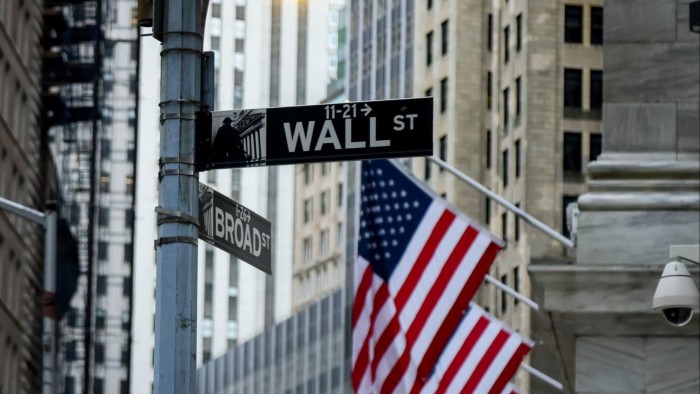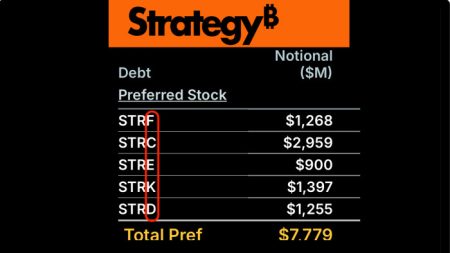The Federal Reserve’s massive hiking cycle pretty much wiped out bond investors in 2022. But you know who fared well? Loan investors.
Loan investors love rising interest rates. Unlike almost all bonds, loans pay a floating rather than a fixed rate of interest. That means no capital losses (or gains) if the US Treasury bond prices fall (or rise). The things that really matter are where the Fed sets rates (the higher the better), the extra credit spread you can charge the borrower, and whether the borrower you’ve lent money to runs into trouble.
One way investors can get exposure to loans has been through “Business Development Companies” — weird US legal structures set up in the 1980s to encourage venture capital, but which now serve overwhelmingly as a portal into the private credit industry. Their assets under management have exploded over the past few years and are attracting increasing numbers of regulatory eyeballs. As the Federal Reserve wrote in a May report:
. . . the lack of transparency and understanding of the interconnectedness between private credit and the rest of the financial system makes it difficult to assess the implications for systemic vulnerabilities.
Wait — what even are BDCs? Are they really a systemic threat to the financial system? What could go wrong for them? Should I be worried?
We’ve got you covered.
The ABCs of BDCs
BDCs are basically vehicles set up to provide finance to mid-sized American companies, and have about $478bn in assets under management, according to SOLVE. The BIS estimates they are now responsible for a quarter of “direct lending” in the US — when an investment fund makes a loan to a company, rather than a bank.
Until about 10 years ago they were almost exclusively publicly listed and traded — so a bit like investment trusts in the UK. But increasingly the legal structure has been used by asset management firms to create private funds into which investors can move money into (and out of) at par value.
The biggest of these private funds is BCRED — the Blackstone Private Credit Fund — the BDC whale that controls more than $70bn of assets. But there are plenty of other BDC megafunds with more than $10bn of assets.
So investors have allocated almost half a trillion dollars to BDCs? Not quite. Around half of BDC assets are debt-financed. This is how it works:
-
You (the investor) send me (the manager) $100
-
I use that $100 to borrow another $100
-
I then lend out $200 to smallish US companies — typically too small to issue a bond or a broadly syndicated loan
-
You get a leveraged return 🥳 🥳 🥳
-
I get to charge base fees not only on your $100 (if I’m a public* BDC), but also on any leverage I’ve managed to secure, plus a cut of the overall investment income 🤑🥂🤑
Both manager and investor are aligned in seeking the highest possible levels of investment income, and if this happens to also swell the fee-paying asset base through BDC debt, well ¯_(ツ)_/¯. As a result, the proportion of assets funded by debt rather than investor subscriptions has risen fairly relentlessly over the years.
This rise in leverage across BDCs is maybe what has fuelled interest among folks at the Federal Reserve and the Bank for International Settlements.
After all, there’s a huuge body of regulation that has been developed over decades just sitting there designed to be applied to entities lending to small businesses using debt finance. It’s called bank regulation. But BDCs are not banks. They’re archetypal non-banks. And whenever non-banks borrow lots of money from banks to do bank-like things, regulators are going to get a bit testy.
A systemic threat to the financial system?
Collectively borrowing hundreds of billions of dollars to invest in risky loans doesn’t necessarily make you a systemic threat to the financial system. Sure, BIS researchers have found their leverage to be “highly procyclical”, and that “reliance on bank credit lines could transmit stress in private markets to bank balance sheets through simultaneous credit line drawdowns”. But it looks to us like stress would likely be absorbed by BDC equity holders.
This is because — first up — the total amount of money that BDCs have borrowed (or have in untapped borrowing facilities) from banks is not that big in the grand scheme of things:
It’s interesting to see that BDCs make more use of bank finance than private debt funds — which are more than twice their size — but out of the $56bn of loan commitments, BDCs had drawn down $32bn at the end of 2024.
So they could quickly tap banks for another $24bn in a stressed scenario, but this doesn’t sound like crazy money. Nor is the $56bn overall figure a high enough for this to constitute a systemic risk to the banking system. The remainder of the BDC borrowing is mostly from bond sales, ameliorating any system-wide dangers.
Secondly, while leverage has increased enormously over the past decade, it isn’t actually that high when we look at the largest BDCs for which we could quickly scrape data:
Some — like the $8bn Goldman Sach Private Credit Corp — employ almost no leverage, and there are few highly-levered outliers. BDC debt-to-equity is anyway capped by law at 2:1.
Three academics who delved deep into the BDC data found that if BDCs were treated like banks (and have their capital measured according to bank capital frameworks) they’d look very well capitalised. They calculated that the median BDC risk-based capital ratio comes out at 36 per cent, “which is 26 percentage points more than the Federal Reserve’s stress testing framework would require”. Moreover:
In a “severe adverse scenario” where they suffer 16.6% credit losses before revenue (8.3% losses after revenue), they would almost all still be solvent — with all but four BDCs having stressed capital ratios in excess of 15% — far in excess than the average US bank stressed capital ratio of 9.9%
So bank-like non-banks are actually safer versions of banks? Maybe.
The Fed certainly isn’t sure, arguing that even though BDC leverage is capped at 2:1, consolidated leverage could theoretically reach up to 12:1 when combined with affiliated middle market CLOs and joint venture loan funds. And the BIS reckon that “procyclical leverage could lead to steeper reductions in credit supply during downturns and further propagate stress”.
But this all looks relatively unsystemic to Alphaville (for now).
But why do these things even exist?
Small and middle-sized firms want to borrow money for all sorts of things — business expansion, inventory finance, whatever. Being small or middle-sized they aren’t necessarily big enough to issue a $500mn bond or even go to the loan market to issue a broadly syndicated loan. But they are large enough to shop around across banks and private credit funds for a direct loan.
And we can see why people might want to take leveraged exposure to bank loans in a rising rate environment. There are now CLO ETFs and the like, but BDCs are still probably the easiest and certainly the longest-established way for investors to get this exposure.
Here you can see how BDC investors have fared compared to broad US bond market investors over the past five years:
But why have traditional banks not only allowed BDCs to muscle into their lending market but also financed their expansion? Is lending to BDCs at SOFR + 230bps really better business than lending to middle market firms at SOFR +600bps?
Apparently so. And the reason why this is the case can be found in the regulation of bank capital.
For every dollar of tier one capital, a bank can either lend $1 to an SME or $5 to a BDC. They get a bigger bang for their buck and can boost their own return on equity by skipping the costly process of originating and servicing loans and just funnelling money to BDCs instead.
What could go wrong for BDCs?
If BDCs don’t immediately look like they are on the brink of bringing down the global financial system, and have delivered good returns for bond or bond-adjacent investors in a period of higher interest rates, what could go wrong for them?
To Alphaville, the two main threats look like they are losing too much or winning too much.
Bad outcome Number 1: losing too much
You’d think that one way that BDCs might come unstuck is by not getting paid back. And you’d be right.
A big reason why middle market businesses have to pay interest rates as chunky as SOFR +600bps is that they are perceived to be risky borrowers with a non-trivial risk of default. If you lend all your money to these sorts of entities you should expect to not get all of it back — no matter how good your credit research.
But you’d also probably hope that interest from all those companies that don’t default is big enough to cover your credit losses from those that do, leaving enough money to service their own debts from banks and bond markets and satisfy their shareholders.
To get a sense as to how sensitive BDC shareholder returns can be to credit losses, we’ve borrowed a model that featured in Josh Easterly’s April shareholder letter. Easterly is co-CIO and one of the founding partners of Sixth Street — one of the most prominent private credit managers — so while his outline of BDC unit economics is a mere sketch, it’s a well-informed sketch.

Running from the top you can see their example BDC lends money out at a 10.2 per cent rate of interest. Add on the amortisation of upfront fees and income hits 10.7 per cent.
But if you assume $110 of debt for every $100 of equity — as he does — the net interest income return on equity is sufficiently juiced to hit 15 per cent. From this we’ve got to subtract management fees (more on which later) and credit losses.
What happens to return on equity on net interest if we move this credit loss number up or down? Very predictable things:
We don’t expect a Sveriges Riksbank Prize in Economic Sciences in Memory of Alfred Nobel for observing that leveraging into risky loans will make you very sensitive to credit losses.
What have credit losses been like in private credit? As we wrote last month, they appear to have been almost unbelievably low. Around Covid-19 they jumped to just 2.5 per cent, and over the past five years they have averaged less than 1 per cent a year. This is below default rates on leveraged loans — to which private credit is often compared.
But according to Zain Bukhari at S&P Global Intelligence, the low default rate relies on a narrow definition of default such as missed payments or Chapter 11 filings, and:
. . . often overlooks instances like conversion of cash pay interest to [Payment-In-Kind] PIK, amortization holidays or maturity extensions without adequate offsetting compensation — events generally considered as a Selective Default.
Once we include these Selective Default events the private credit default rate roughly quintuples. And according to Lincoln International this “shadow default rate” among direct lending crept up further to 6 per cent in Q2 2025.
The proportion of private credit loans that are PIKs has increased substantially over recent years. And in some cases PIKs represent more than 15 per cent of individual BDC gross investment income.
The BDC with the highest concentration of PIK interest to gross investment income, according to S&P Global Ratings, is Blue Owl Technology Finance Corp BDC, a $12bn publicly traded fund that specialises in — you’ve guessed it — financing technology companies.
Is its PIK exposure exhibit A for the prosecution in the case against managers disguising defaults as funky high yielding instruments? We spoke with Erik Bissonnette, its lead portfolio manager, to find out.
Bissonnette told us that if PIK lending is “done thoughtfully and done deliberately and done strategically with the right controls around it, it’s accretive to returns and perfectly safe”. While this is something that you’d maybe expect a loan manager with an uncomfortable level of PIKs to say, we actually think that he has a point.
If you’re a loan manager with a high opinion of your own ability to pick companies that will never default, you’ll want the investment which pays you the most for your credit opinion. In the loan market this includes forsaking debt that pay boring old cash interest and making loans that accrue higher levels of interest — all of which will prove money-good if the company has the wherewithal to survive until the loan matures.
And if there’s any sector where you’d expect companies to pay up a little to stay in growth-and-reinvestment mode rather than opt for the cheaper pay-down-debt mode, it’s technology.
So sure, if he’s wrong his clients will be in a lot of trouble. But according to the company’s investor literature, the proportion of PIKs held by Blue Owl Technology Finance Corp BDC that are ‘bad PIKs’ — that is to say PIK deals amended after origination to relieve liquidity pressure rather than structured at origination as PIKs — is only 3 per cent.
This compares phenomenally well to the 53 per cent of PIK deals that Lincoln International values across the industry and considers ‘bad PIKs’. So maybe not exhibit A after all.
But it’s hard from the outside to differentiate ‘good PIKs’ from ‘bad PIKs’. Another private credit manager told us “there are a lot of gymnastics that managers can do to keep credit losses artificially low”. And as we’ve previously written, there is no shortage of PIK-sceptics.
There’s another problem with PIKs in BDCs that comes from their tax status.
When the legislation first went through establishing BDCs the investment vehicles were given some tax kickers. Specifically, if a BDC distributes 90 per cent of their profits they are taxed as regulated investment companies by the IRS, meaning that they pay little (or no) corporate tax. And if they distribute 98 per cent of their profits they aren’t liable for a 4 per cent excise tax on undistributed profits. Put simply, there are enormous tax incentives for them to distribute almost all investment income to shareholders.
But what is investment income? Cash interest and dividends, sure. But also any PIK interest that is accrued by the BDC even if it’s not actually received as cash. Which means holding PIKs bestows on BDCs an obligation to pay out cash before it’s received.
And so, if more than 10 per cent of a BDC’s investment income derives from PIK accruals and you want not to be clobbered by taxes, they’re going to have to either:
-
Raise debt to pay out shareholders;
-
Distribute cash that comes either from loans maturing or being redeemed early;
-
Use new shareholder subscriptions to pay out existing shareholders.
In all cases the cash-pay element of the portfolio mechanically shrinks unless PIKs are actively reduced by the manager. And according to the Loans Syndication and Trading Association, almost a fifth of BDCs had more than 10% of investment income coming from PIK accruals in Q1 2025.
This hasn’t been a problem so far, partly because there’s been plenty of extra borrowing headroom available, partly because in a falling spread environment maybe a third of loans either mature or get prepaid by their borrowers who find a better place to refinance, and partly because private BDCs have been raking in a tonne of new investor flows. But it’s definitely one to watch for the future.
Bad outcome Number 2: winning too much
While the prospect of not getting your money back is the obvious risk to the unit economics of BDCs, it’s the prospect of winning too much that currently elicits a bit more concern among the industry.
The boom in BDC assets under management has been only one part of the overall boom in private credit.
This chart (using Fed data) brings us up to the end of 2024, but we now count more than $450bn in BDC assets, and industry analysts reckon total US private credit AUM has eclipsed $1.7tn.
Finding good creditworthy companies willing to borrow all this money is hard. Especially given the constipation in private equity exits that has bunged up the leveraged buyout deal pipeline.
Furthermore, Jeff Diehl, managing partner and head of investments at Adams Street Partners, tells FTAV that the flood of money into the market from BDCs and insurers — what he terms private credit hyperscalers — is creating a race to the bottom in terms of underwriting, selection, and pricing. And that these will ultimately show up in credit statistics and poor investor returns.
We don’t have a great way to chart the deterioration or otherwise in underwriting and selection, but we can see what he means about pricing. Spreads on new loan originations have fallen fairly sharply:
If you buy a corporate bond and its spread falls, happy days: yields (or spreads) down, prices (or at least relative prices) up. But we’re in loan land. Lower credit spreads mean a lower promised return and no meaningful upward bump in the capitalisation of your existing loan portfolio.
Worse, when the market is hot, all your very favourite borrowers whose creditworthiness has been improving can repay you early and refinance with either you or one of your competitors. So if you thought you had an overall portfolio spread of, say 6 per cent over SOFR and the price of credit drops, you face the choice of re-originating your old portfolio at say 5 per cent over SOFR or just sitting with vast quantities of cash.
Moreover, the overall investment income constitutes more than just the spread over SOFR. There’s SOFR itself — the secured overnight financing rate. While SOFR does not precisely equal the fed funds rate, it moves pretty much lock step with the fed funds rate.
It’s unlikely to have escaped your attention that the Fed has cut interest rates by 125 bps over the past year or so. And the market is pricing them to cut another 75 bps by April 2026. Let’s see what this combination of lower SOFR and lower spreads will do to BDC unit economics using Easterly’s rough framework:

Return on equity for BDC shareholders falls from 6.7 per cent to 5.2 per cent using their numbers and their maths. And this is assuming that through some mix of amazing credit selection and high recovery rates, BDCs in aggregate suffer only 1 per cent in credit losses.
A 5.2 per cent return doesn’t sound like a fantastic deal for taking a leveraged exposure to the private credit market right now. But maybe it’s fine. We’ll see.
One last thing
It seems weird that managers in public* BDC-land accrue base management fees not only on the money that shareholders ask them to manage, but also on any money the BDC borrows. Earning 1.5 per cent on $100 client money? Why not double your fees by levering up your clients’ exposure to the assets to which they’ve allocated?
Yes, we know — clients want levered exposure. But we’re not aware of another asset class that puts so much power over manager remuneration so directly into the managers’ hands.
Moreover, most BDCs we’ve looked at structure the manager’s performance fee to come from investment income rather than total returns. And this directly incentivises managers to maximise investment income in the short term, pretty much regardless of credit outcome.
So in the case where a manager is choosing between a cash-pay loan that pays an interest rate of SOFR+5 per cent or a PIK loan that accrues at SOFR+7 per cent, the manager will often be able to count a share of that additional spread directly as part of their personal P&L — whether or not the PIK loan ends up as money good or in default. This seems . . . unideal.
In fact, we used the Sixth Street framework to sketch out how manager fees and shareholder return on equity would fare under different scenarios for overall loan spreads and credit losses:
While every self-respecting BDC manager will want to avoid credit losses — for the sake of their clients, their firm’s reputation, their career prospects, and also to maximise future assets under management from which they will derive next year’s fees — it’s remarkable quite how insensitive short term fee income appears to be against heavy credit losses, as well as how hefty the fees are.
Wrapping up
So, to bring a long post to some sort of conclusion, BDCs are big, getting bigger, and they’re increasingly important to American SME borrowers — particularly PE-sponsored buyouts. But despite employing hundreds of billions of dollars of leverage to invest in some of the riskiest looking loans, they don’t look to Alphaville like a massive systemic risk lurking in the background waiting to take down the financial system.
However, in employing hundreds of billions of dollars of leverage they do, unsurprisingly, expose their investors to credit risk. Some analysts and managers reckon that there’s a bit of jiggery-pokery going on to avoid recognising the true extent of credit losses through the cunning use of PIKs and other shenanigans. But things get pretty complicated pretty quickly when you try to nail down quite who the dodgy managers doing this might actually be.
Less contentiously, given the spread compression that has accompanied the rush into direct lending from BDCs, private credit funds and insurers, it’s not hugely clear that future returns will be as compelling as they have been in the past.
Still, given all the changes put in train by Trump to facilitate Americans parking their 401(k) pensions in private assets it seems likely that fresh money will continue to flow to BDCs. And the BDC asset management money spigot will continue to gush.
* Thanks to gcsemaths.org for pointing out that we hadn’t made clear that base fees are applied to total gross assets only for public BDCs. We spot-checked a fair number of BDC documents after being told about the way fees are applied to total assets, but all these documents were for public BDCs . . . because they’re public. If we’d have checked BCRED’s offering terms we’d have seen that they charge base fees on NAV rather than total gross assets, and incentive fees on (leveraged) investment income.
Read the full article here













